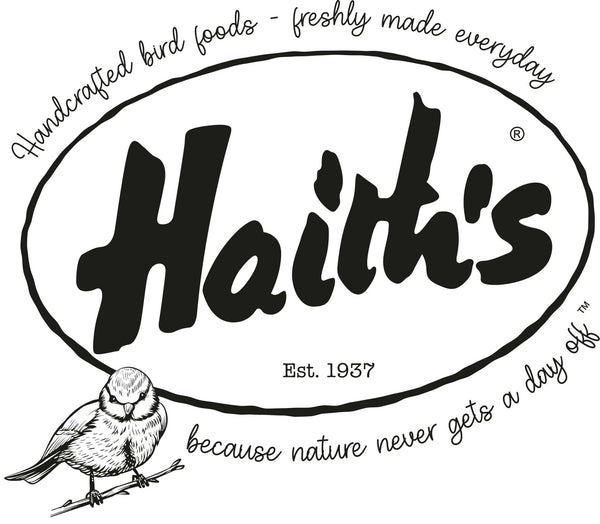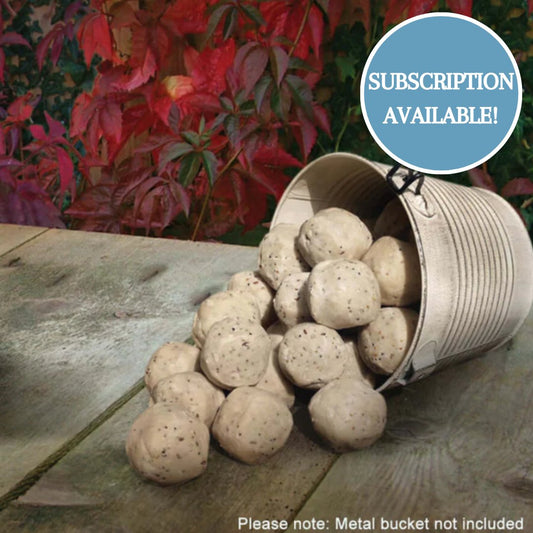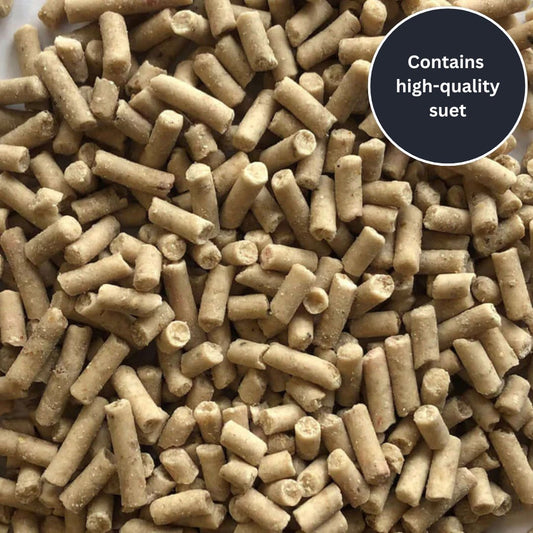
Where to hang a suet feeder for wild birds
If you enjoy feeding wild birds, adding a suet feeder to your garden is a fantastic way to attract a variety of species. However, knowing where to hang a suet feeder can make a significant difference in how many birds visit your feeding station.
Best locations for hanging a suet feeder
Placing your suet feeder in the right spot is crucial for attracting birds while keeping them safe from predators.
Here are some top tips:
-
Near trees & shrubs
Birds feel safer when they have nearby cover. Hanging your feeder close to trees or shrubs gives them a quick escape route if predators appear.
-
Away from windows
Placing feeders too close to windows can lead to bird collisions. Try to position your feeder at least 3 mtrs away from windows to reduce this risk.
-
Shaded/sunny spots
Suet melts in hot weather, so a shaded area will help keep it fresh. In winter, placing it in a sunny spot can help keep suet softer.
-
Super Value Fat Balls for Birds (no nets)
4.59 / 5.0
(74) 74 total reviews
Regular price From £9.99Regular priceUnit price / per£9.99Sale price From £9.99 -
Great British Suet Fat Balls (no nets)
4.92 / 5.0
(78) 78 total reviews
Regular price From £3.61Regular priceUnit price / per£3.61Sale price From £3.61 -
Hi-Energy Insect Suet Pellets
4.97 / 5.0
(29) 29 total reviews
Regular price From £4.48Regular priceUnit price / per£4.48Sale price From £4.48 -
Hi-Energy Berry Suet Pellets
4.88 / 5.0
(24) 24 total reviews
Regular price From £4.48Regular priceUnit price / per£4.48Sale price From £4.48
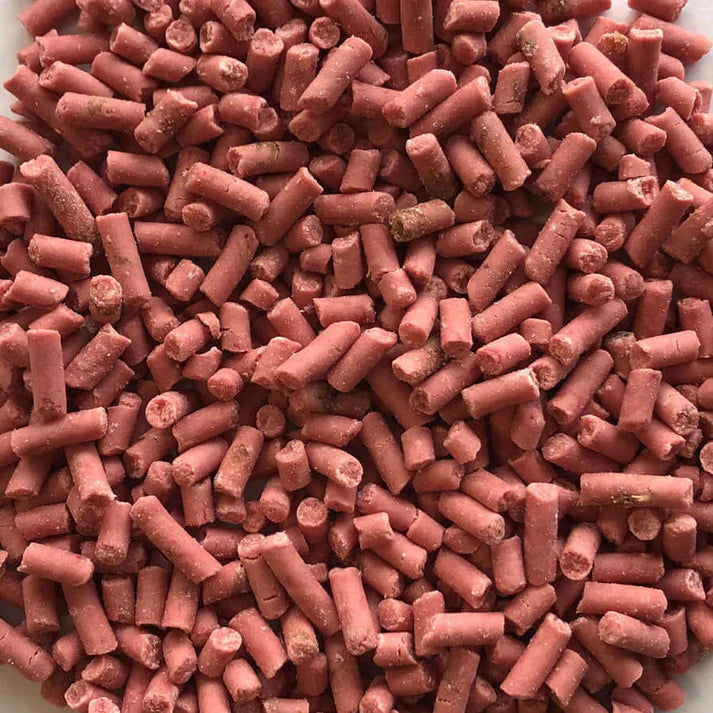
Is vegetable suet okay for birds?
Vegetable suet, often made from palm oil or hydrogenated vegetable fats, is not the best option for birds. While some commercial suetcakes use vegetable fats, they do not provide the same high-energy nutrition as animal fat. Additionally, certain vegetable fats can be difficult for birds to digest. If using vegetable suet, ensure it is free from additives, salt, and preservatives.
Suet longevity depends on temperature & exposure to the elements but how long does suet last outside in different seasons?
-
Winter (below freezing)
Suet can last several weeks as cold temperatures prevent spoilage. However, birds will likely eat it quickly in winter due to higher energy needs.
-
Spring & Autumn (mild temperatures)
Suet will remain fresh for 1-2 weeks. Keep an eye on it to ensure it hasn’t turned rancid.
-
Summer (hot temperatures above 24'C)
Suet can melt and spoil quickly, often within a few days. Consider placing the feeder in shade.
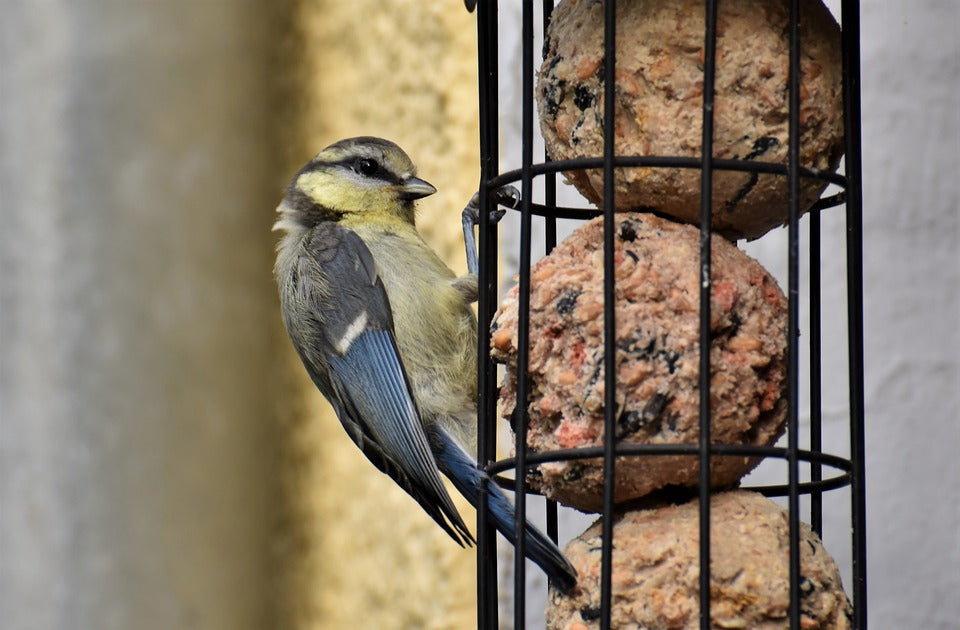
What birds eat suet?
Suet attracts a wide variety of birds, particularly those that rely on high-fat foods for energy. Some common suet-loving species in the UK include those shown below.
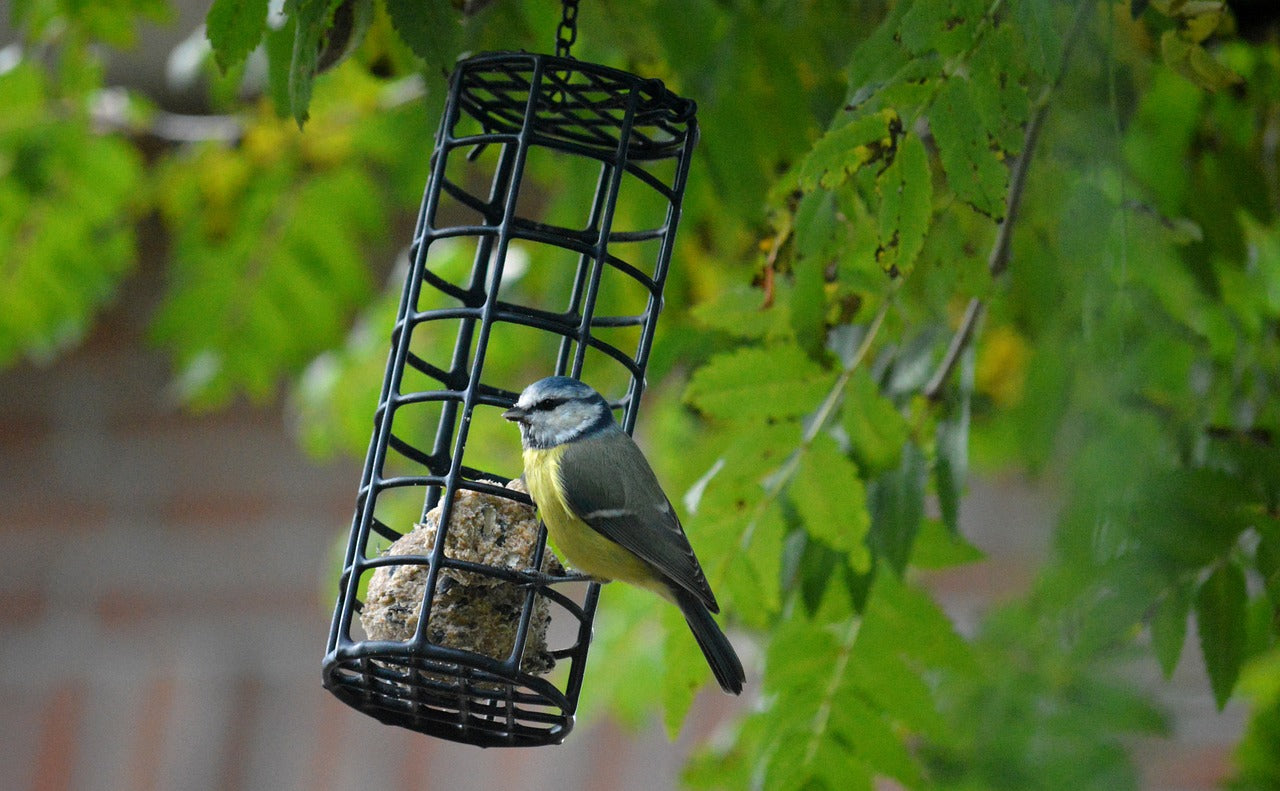
Blue Tit
Suet offers an easily accessible source of energy.
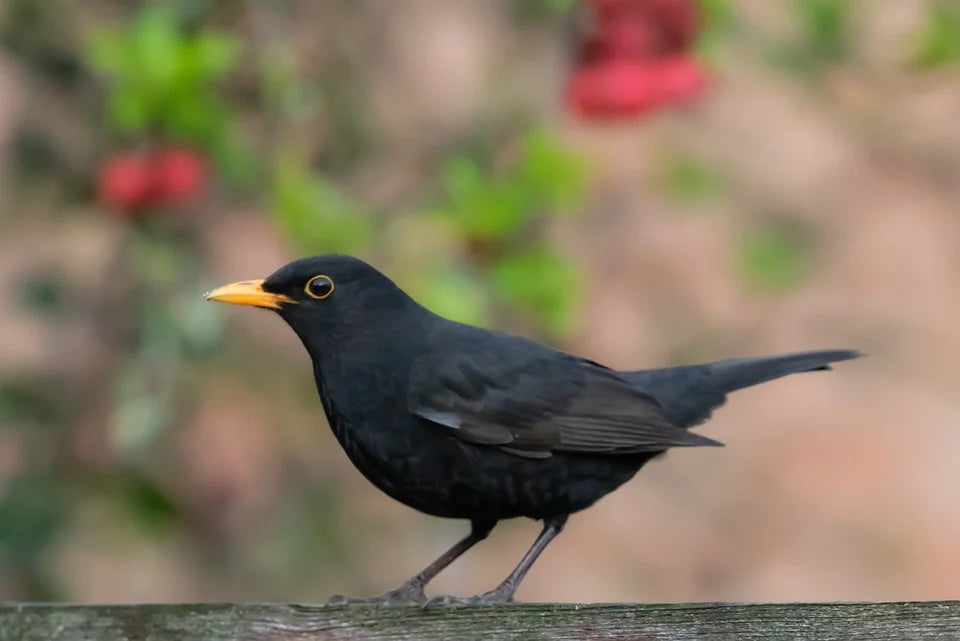
Blackbirds
Suet gives a great balance of fats and proteins.
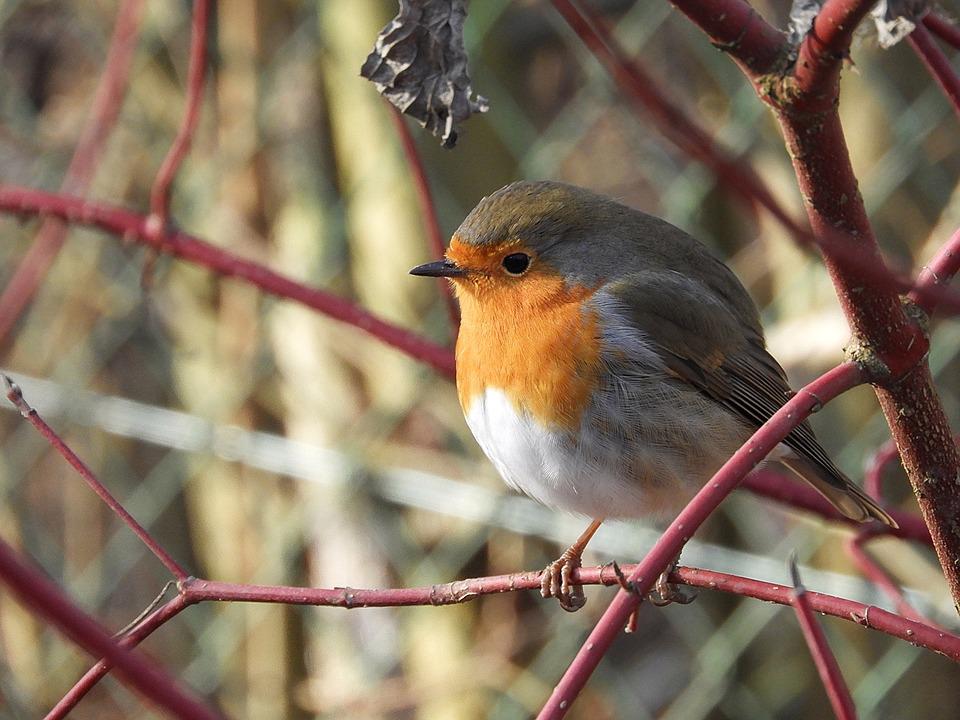
Robins
Suet helps to fatten birds up to help them through the winter.
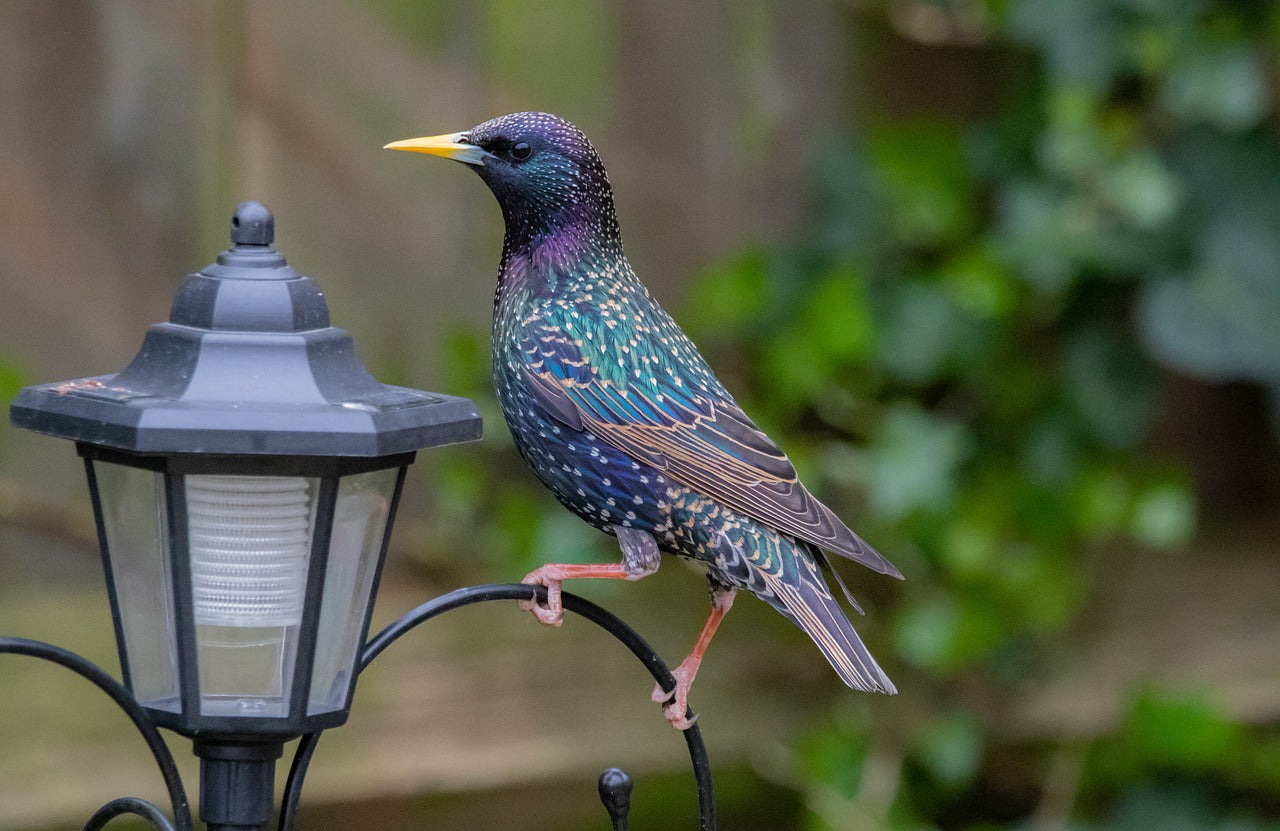
Starlings
Suet is easily digestible providing instant energy.
Hanging a suet feeder in your garden is an excellent way to support wild birds, especially in winter when food is scarce. By choosing the right location, using high-quality suet, and ensuring it stays fresh, you can attract a wide variety of birds while keeping them safe and well-fed. Whether you buy suet or make your own, providing this high-energy food source will
bring joy to both you and your garden birds all year round.
Written by Angela.
